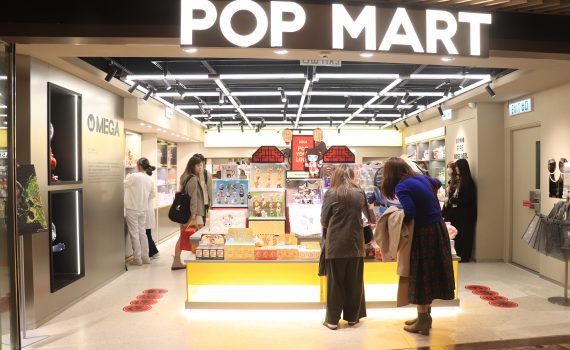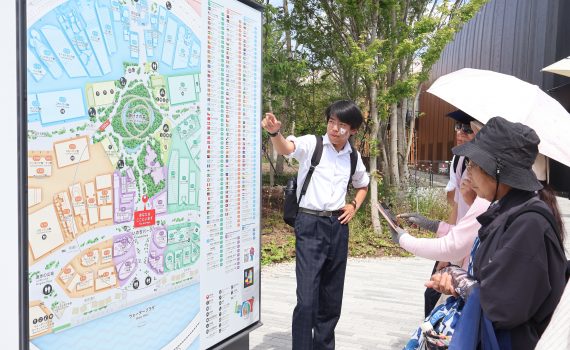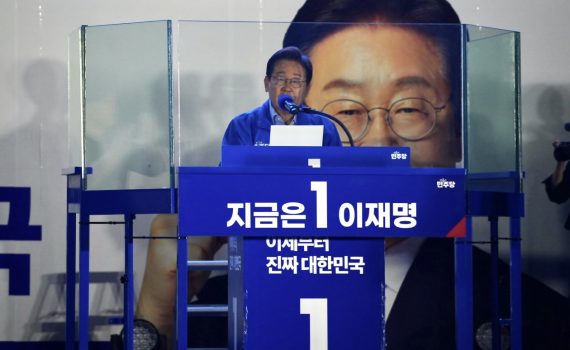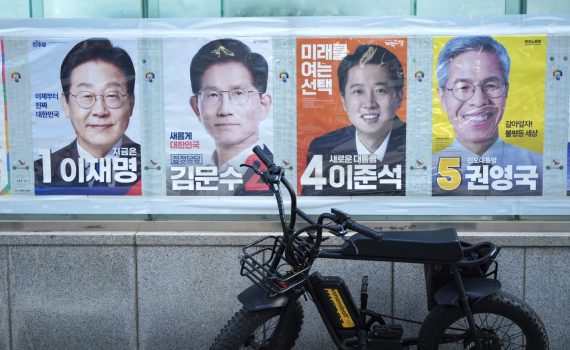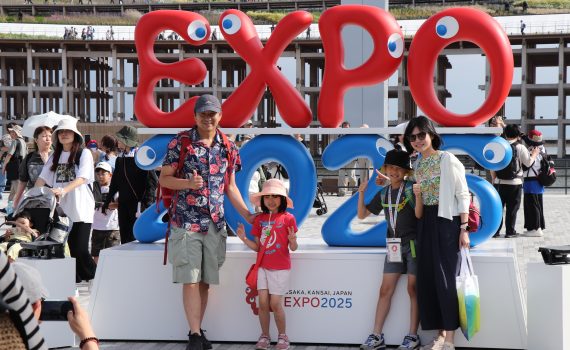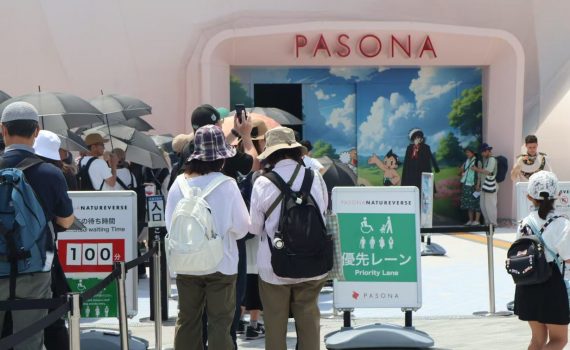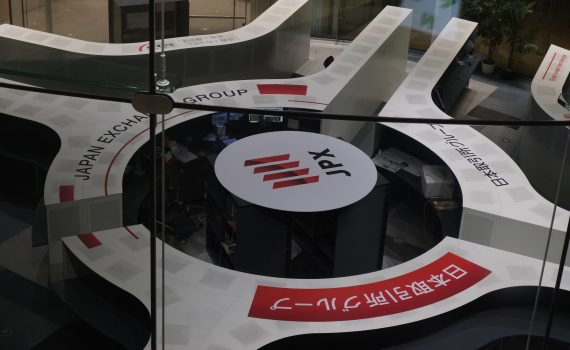TOP STORIES
Cultural currency: The economic power of “Goods” in Hong Kong's youth market
- 2025-07-06
- Culture & Leisure
- By: Yichun Fang、WANG RuoshuiEdited by: XIA Fan、BO Chuxuan
- 2025-07-06
Eager to buy a limited edition “goods” of Chiikawa, a Japanese anime character, Connie Fung was contacting a Japanese buyer on social media platforms to negotiate price and delivery details. "These characters aren’t just toys," Fung said, her eyes lighting up. "When I secure a rare piece by buying an edition, it's like winning a cultural badge of honour." Fung, a university student, spends around HK$5,000 a year on collecting Chiikawa-related items. Like Fung, Ada Liu is also a fan of Chiikawa, who hangs the figure on her bag, noting that many fans do this as a form of identity. “We can start a conversation easily while shopping in a goods store, as ‘goods’ helped us identify each other–You are also a fan of a certain series,” said Liu. In the context of Anime, Comics, and Games (ACG) culture, “goods” refer to merchandise derived from Intellectual Properties, including items such as badges, dolls, figures, cards, etc. These IP-related items are adored by ACG fans as cultural currency to show their identity and devotion to virtual characters. The passion for collecting goods has heated the wave of “goods economy,” signalling a new consumption trend that “pays for emotional value.” The popularity of the “goods economy” has even caught the attention of Financial Secretary Paul Chan Mo-po, who addressed it in his weekly blog entry. He noted that the rapidly emerging “goods economy” has successfully attracted young people's attention and tapped into their enormous spending power, estimated to be in the hundreds of billions of dollars. “Goods economy” is not only visible on the streets of Hong Kong, but has also entered the city’s capital market. For example, Pop Mart, a Chinese toy company that leads in merchandising Intellectual Properties and was listed in HKEX five years ago, performed exceptionally well in …
LGBT-friendly gyms provide safe environment for non-binary bodybuilders
- 2025-06-23
- Society
- The Young Reporter
- By: SIU Tsz Hang、CHEN XiyunEdited by: Lok Tung LAU
- 2025-06-23
There are more than 10 LGBT-friendly gyms in Hong Kong, targeting the LGBT+ community in Hong Kong. It is to provide a comfortable place for the LGBT and to ensure they feel safe and secure. Reported by Henry Siu Tsz-hang, Richard Chen Xiyun Edited by Canny Lau Lok-tung
Confusion over navigation app at Osaka Expo 2025
- 2025-06-09
- Society
- The Young Reporter
- By: ZHANG Yiping、CAO JiawenEdited by: CAO Jiawen、ZHANG Yiping
- 2025-06-09
Osaka Expo 2025 is supposed to showcase futuristic technologies, but some visitors experience were confused by the official app which was meant to offer with navigation and language support. The app, called “EXPO 2025 Visitors”, has a 2.3/5 rating on Google Play with over 500k downloads, with many users complaining about the slow function, clunky interface, and glitchy performance. “It would be nice if they had a map with the pavilion names on the app, because we have to click on every button to see what it is,” said Frank Johnson, 37, a tourist from the United States. “First we used the maps on the website and then the maps on the app, but we kept getting lost,” said Helen Okoro from the United States. “It’s because there aren’t really any signs with pavilion names in general.” Tourists can buy a paper map for 200 yen at the venue, but the line is usually very long. According to the official website, the map is not distributed free of charge due to sustainability concerns. Across the venue, groups of volunteers are placed to help visitors find their way. “Lots of tourists need help with directions in the venue,” said a Japanese volunteer who chose not to reveal her name for fear of getting into trouble. “It is generally circular, so it’s hard to tell the direction,” she added. Angela Zhou, a Chinese visitor aged 28, said the paths inside the venue are confusing. “Google Maps is much more useful compared to their official app,” she said. “It allows you to directly search for each pavilion and head straight to it, while the official app is slow.” “Many of the app’s functions require you to visit the website on a browser. For example, clicking on the booking button on the app just …

2025 Japan World Expo: Kawaii culture fuels consumer spending
- 2025-06-07
- Business
- By: XIA Fan、ZHAO Runtong、WANG RuoshuiEdited by: WANG Ruoshui、ZHAO Runtong、XIA Fan
- 2025-06-07
The Osaka Expo 2025 kicked off on April 13 under the theme 'Designing Future Society for Our Lives,' featuring Myaku-Myaku, a multi-eyed, red-and-blue blob as its official mascot along with other global partners’ mascots reflecting their home countries’ culture, highlighting Japan's renowned and thriving ACG (anime, comics, and games) industry. Japan’s unique animation-producing environment catalyses “Kawaii Culture” (かわいい文化), which emphasizes appealing characters. The "performativity of cute," as anthropologist Christine Yano describes it, is deeply embedded in contemporary Japanese culture. In her book Pink Globalization: Hello Kitty’s Trek Across the Pacific, Yano explains that kawaii culture serves multiple roles: it’s a playful, personal mode of self-expression and identity, while also functioning as a potent tool for branding and cultural diplomacy. While Japan has this unique cultural phenomenon, many countries around the globe also have their mascot traditions, leading them to bring their mascots to the party. Outstanding examples ranged from the host country, Japan, to European countries such as Italy and Germany, as well as Asia, including China. Designed by children’s book author Kohei Yamashita through the government’s open call to the Japanese public, Japan’s mascot’s name—an onomatopoeia evoking a pulse — was also chosen from public submissions. Described as "creepy but cute", MYAKU-MYAKU has already sparked significant economic activity through popular merchandise and has greatly enhanced the exhibition's global visibility. At the spot, people lined up for hours to get official plush toys or related items. Visitors poured in to take group photos with the mascot. Elements of Myaku-Myaku can be seen around the exhibition, being part of the whole event. Sato Ryoko rushed to the satellite store of MARUZEN JUNKUDO right after her visit to the Japan Pavilion, spent over one hour waiting in line to get in, and won the first prize of a giant MYAKU-MYAKU plush toy …
Photo Gallery: South Koreans choose their new president after six months of political chaos
- 2025-06-05
- Society
- The Young Reporter
- By: Wang Yunqi、BO ChuxuanEdited by: BO Chuxuan
- 2025-06-05
The South Korean presidential election wrapped up with liberal party leader Lee Jae-myung winning the presidency and being sworn in on June 4, bringing an end to six months of political chaos since martial law. Lee Jae-myung won with 49.42% share of votes, amounting to 17,287,500 ballots, the largest number of votes in South Korean presidential election history, according to Yonhap News Agency, while voter turnout reached 79.38%, the highest since 1997, reflecting a high level of public mobilisation. Besides Lee’s victory, Kim Moon-soo, leader of the conservative People Power Party, received 41.15% of the vote, as the previous party leader’s martial law declaration received wide criticism, with Lee Jun-seok of the Reform New Party securing 8.34% of the votes, who emphasised on political reform and youth empowerment. The remaining two candidates, Kwon Young-guk and Song Jin-ho, received 0.98% and 0.1% of the votes, respectively. According to a May poll conducted by Gallup, there were notable differences in support rates across age groups. Lee Jae-myung enjoyed higher support among people in their 40s and 50s, while Kim Moon-soo was more favoured by those in their 60s and 70s. And Lee Jun-seok received relatively greater support among younger voters. South Korea faced significant disruptions in high-level diplomatic activity following ex-president Yoon declaring martial law on Dec. 3, 2024, with domestic investors suffering “roller coaster” fluctuation of both the stock market and currency, also driven by the tariff policy initiated by US President Donald Trump. With concerns for the country’s social and security landscape raised, Lee outlined five key missions for his administration during his victory speech, including ending internal conflict, achieving national unity, revitalising the national economy, ensuring national security, and maintaining stability on the Korean Peninsula. “This is a world where things like martial law shouldn’t exist”, said Lee Eungyeong, …
South Korea Presidential Election 2025: Korean stocks surge more than 2% after the country’s new president announced
- 2025-06-04
- Business
- The Young Reporter
- By: BO Chuxuan、Wang YunqiEdited by: BO Chuxuan
- 2025-06-04
South Korea’s benchmark index surged 2.7% to 2770.84 at close on Wednesday (as of 3:30 p.m. local time) after Lee Jaemyung brought the presidential election to an end with his widely-expected victory at midnight. The Korea Stock Exchange KOSPI Index opened with a rise of 1.4% after a one-day recess due to the election holiday on June 3, reaching a closing high of 2770.84 – the highest level in over 10 months. The index has gained 20.8% since April lows triggered by concerns over Trump’s reciprocal tariff policies. Financial stocks saw significant gains today, with Bookook Securities surging more than 22% while Mirae Asset Securities, SKSquares, and Shinyoung Securities rose about 13%, charging the KOSPI higher. During his campaign, Lee Jae-myung proposed a series of financial policies, such as customised financial services for the underprivileged and debt relief for small business owners. Tech stocks are also leading gains among other component stocks. Chip and appliance maker Samsung Electronics gained 1.8% to 57,800 KRW, with the semiconductor manufacturer SK Hynix surged 4.8%, and aero engine-savvy Hanwha Aerospace gained 1.2%. Lee claimed his presidency and delivered a speech in front of the National Assembly, prioritising the revision of the economy and livelihood to alleviate economic hardship as his second priority in his incoming administration, following the restoration of democracy. “From the moment my victory is confirmed, I will devote every effort to recovering your livelihoods—quickly and decisively,” he said. Lee has also promised to boost the economy by increasing government spending, improving corporate governance, strengthening labour protection, and wrapping up the ongoing tariff talks and exchange rate negotiations with the Donald Trump administration, which may contribute to stabilising market sentiment. The South Korean won strengthened against major currencies on Wednesday, trading at around 1,363 per dollar and 946 per 100 yen as …
South Korea Presidential Election 2025: Young voters see the economy as one of their major concerns amid economic downturn
- 2025-06-02
- Politics
- By: BO ChuxuanEdited by: BO Chuxuan
- 2025-06-02
Young voters in Seoul consider the economy one of the major concerns heading into the South Korean 21st presidential election, which takes place on June 3, as South Korea’s central bank cut the basic interest rate by 25 basis points days before to counter the current economic downturn. “The current (economic) situation is really bad, everything is becoming more and more expensive,” said Victoria Kim, a psychology student at Yonsei University, who gave up travelling abroad but visited cities inside South Korea instead because of the depreciation of the South Korean won. South Korea's won weakened sharply after ex-president Yoon Suk Yeol declared emergency martial law, causing a democratic crisis in the country on Dec. 3, 2024, and hit a record low in nearly 16 years after Trump’s declaration of a 25 percent tariff against Korea-manufactured goods in April. While the South Korean benchmark stock index, KOSPI, moved higher and broke a 10-month record high at 2,720.64 on May 29, boosted by tech shares, which strengthened the won against the USD, this was mainly triggered by the US trade court’s blockade of Trump’s global tariffs. For Kim, the economic uncertainty extends beyond travel decisions to her everyday expenses. “I like to be a vegetarian and eat lots of veg and fruit at home, and with the recent price rises it’s a burden to buy and eat,” said Kim, working part-time in Seoul apart form college right now. Being eager to enjoy cultural life, Kim must continue working to save money, which makes her feel frustrated and negatively impacts her mental well-being. Jerry (assumed name), a student in the Korea University department of Humanities, sees social welfare for low-income groups as the key issue in his vote, and is looking for substantial and implementable funding policies to support the research and …
Gender-neutral toilets, Hello Kitty and Gundam highlights at the Osaka Expo
- 2025-05-29
- The Young Reporter
- By: LI Sin Tung、CHEN Yik NamEdited by: Jenny Lam
- 2025-05-29
What is the Osaka Expo? The Osaka World Expo opened on April 13, and it is the first post-COVID Expo. Over 160 countries, regions, and organizations are exhibiting their futuristic displays in over 80 pavilions, each with distinctive architectural designs. It is the second Expo in Osaka. The last one was in 1970. This year, it is in Yumeshima, or “dream island”, a reclaimed industrial waste burial site in Osaka Bay. The theme is “designing future society for our lives”. Each pavilion is divided into four zones: Connecting Lives, Saving Lives, Empowering Lives and Future Life. Osaka Expo will run for 184 days until 13 October, 2025. What is the Grand Ring? The Grand Ring, designed by Fujimoto Sou, is the largest wooden architectural structure in the world, measuring 20 metres high and having a 2-kilometre circumference. It is constructed using a fusion of modern construction methods and traditional Nuki joints, such as those used in the construction of Japanese shrines and temples. The Grand Ring cost about 35 billion yen (HK$1.9 million) to build and used around 27,000 cubic metres of wood. “You can get such a great view of so many pavilions from the Grand Ring,” said Asa, a 30-year-old visitor from Saga, Japan. Asked about the “waste of money” discussion of the Grand Ring, Asa said she does not think there is anything wrong with the spending. “It is a big international event, so these expenses are necessary,” she said. A Hong Kong visitor, Steven Gong, 40, said the cost of the architecture is not worth it. “It is beautiful, but it is also a waste of resources and money if it cannot be reused,” he said. The Japan Association for the 2025 World Exposition will consider recommendations from private enterprises and public organisations on how to …
Number of visitors at the Osaka Expo hits record high
- 2025-05-29
- Society
- The Young Reporter
- By: ZHANG Yiping、CAO JiawenEdited by: CAO Jiawen、ZHANG Yiping
- 2025-05-29
The Osaka Expo drew approximately 139,000 visitors on May 23rd, breaking the record for the highest number of visitors on a single day, despite ongoing complaints over confusing booking systems and long waiting times. The total number of visitors exceeded 5 million on May 26th, 44 days into the six-month event, according to the Japan Association for the 2025 World Exposition. But that still falls short of expectations, as the Expo is projected by the association to have a total of 28.2 million visitors (150,000 daily). “The waiting time for each pavilion is very long,” said a Japanese couple, Kayo Aoshima and Yoshiaki Aoshima, aged 82 and 78. “We went to the Arab Pavilion, where we had to wait for more than 30 minutes.” Kayo added. Pavilions at the Expo have different admission strategies. While a few only allow for those who have booked in advance to enter, others allow on-site queuing. With each ticket, visitors can make one reservation for one pavilion or event through a lottery system seven days before their visit. They can also reserve or adjust bookings during the three days leading up to their visit, which operates on a first-come, first-served basis. “We have visited many pavilions, such as the USA, Colombia, and the Netherlands, ” said David Aragon, 40, a Mexican tourist.“We had to wait for around one hour at each one of them.” “Maybe more info outside the pavilions to know what is inside and exactly where we can enter something,” added Aragon. Nishijima Ryo, chief of Japan Association for the 2025 World Exposition, who was overseeing work at the Future of Life Pavilion, explained why only visitors with reservations could be admitted. “In this pavilion, you can wear an earphone device and experience the exhibition,” he said. “The number of machines is limited, so we limit …
Japan Stocks edges lower after Moody’s cuts U.S. credit ratings, export sectors shine
- 2025-05-19
- Business
- By: XIA Fan、WANG Ruoshui、ZHAO RuntongEdited by: XIA Fan、WANG Ruoshui、ZHAO Runtong
- 2025-05-19
Nikkei 225, Japan’s premier stock market index tracking the performance of 225 large publicly traded companies listed on the Tokyo Stock Exchange, opened at 37572.36 today and dropped 0.68% to 37480.37 as of the market's end. TOPIX, an index overing all domestic common stocks mostly listed on the TSE Prime Market, traded higher at midday at 2744.16, but later reversed course and closed at 2740.45, down 0.075% compared with yesterday. Performances of Japan’s stock market aligned with global cautious sentiment after Moody’s downgraded the US government's top credit ratings. Export-oriented stocks went up amid the falling market. Pharmaceutical company Daiichi Sankyo surged 7.06% to 3,698 yen, which continued the growth trend since last week. Manufacturer Konica Minolta added 6.31% to 469 yen, while Mitsubishi Heavy Industries rose 3.04% to all time highs of 2,916 yen. Beverage company Sapporo Holdings jumped 2.92%to 7613, showing a trending up from the 3-month low on May 14. Analysts believe the weakening Japanese yen fostered a favorable environment for exporters, which would boost investor confidence in companies within this sector. A number of semiconductor-related stocks fell heavily today following the turmoil in U.S. markets. Lasertec Corporation (TSE: 6920), a designer and manufacturer of semiconductor testing equipment, saw its stock price plummet 5.16% today, making it one of the notable underperformers in the Japanese market. Market Commentators attribute this drop to the close correlation between Japanese semiconductor stocks and the U.S. semiconductor market performances. The PHLX Semiconductor Index fell 1.26% as of the report published time amid volatility driven by recent U.S. tariff fluctuations. Ongoing uncertainty in the U.S. market, fueled by frequent pauses and adjustments in tariff policies, has unsettled households and businesses. Sumitomo Mitsui DS Asset Management at the beginning of this year predicted a positive trajectory for the Japanese stock market, emphasizing …

